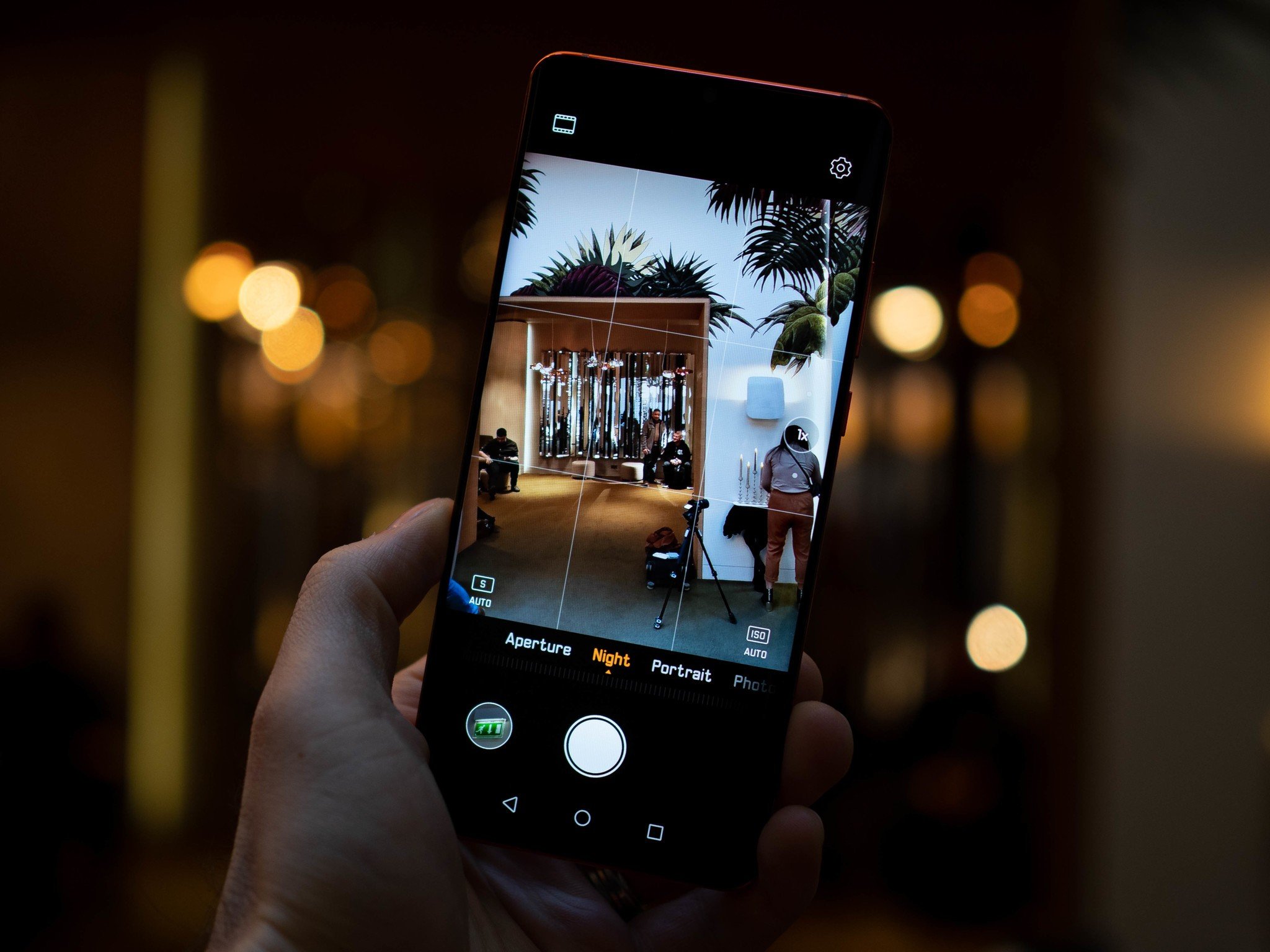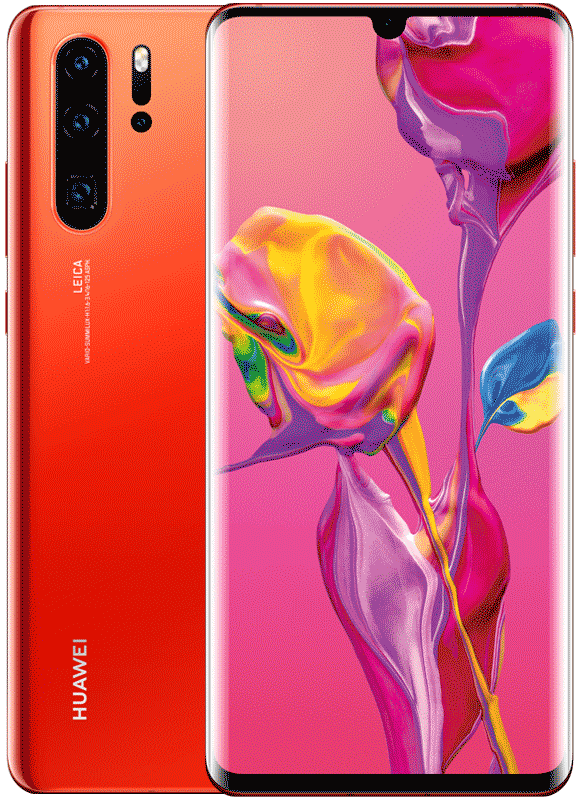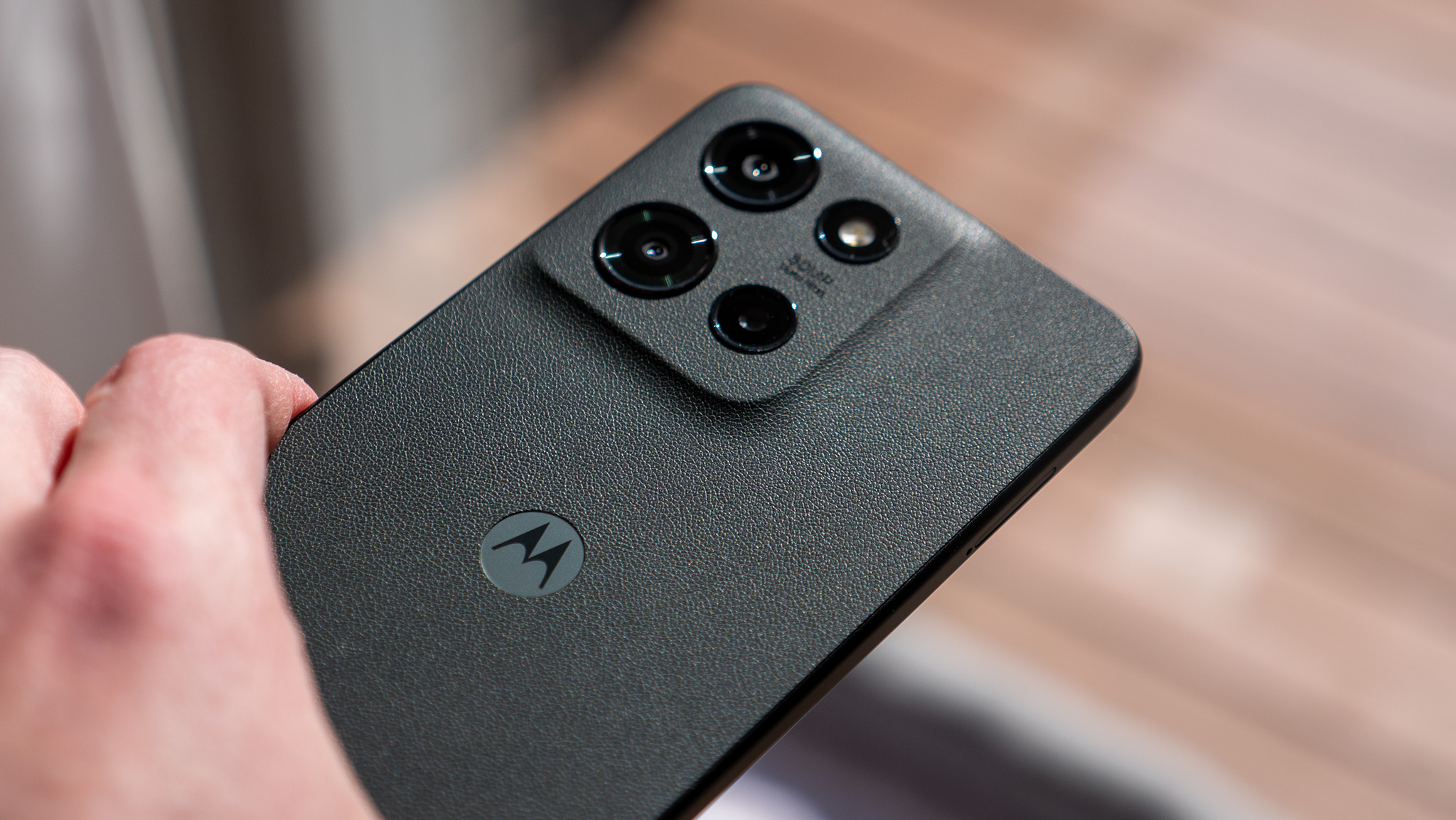How do you definitively say something subjective, like the quality of a photo, or song, or piece of art, is the best? Our culture has been trying to do it for years, rewarding and awarding the most popular or acclaimed tenets of each category, as fact. Because people like certainty, and they increasingly rely on experts to tell them what to watch, read, listen to — and buy.
In the smartphone world, the iPhone has benefited most from that marriage of acclaim and pop culture acceptance; it's a great phone, yes, but it's also the default phone in much of the West. Hollywood celebrities use the iPhone, even when they're paid not to — with embarrassing consequences.
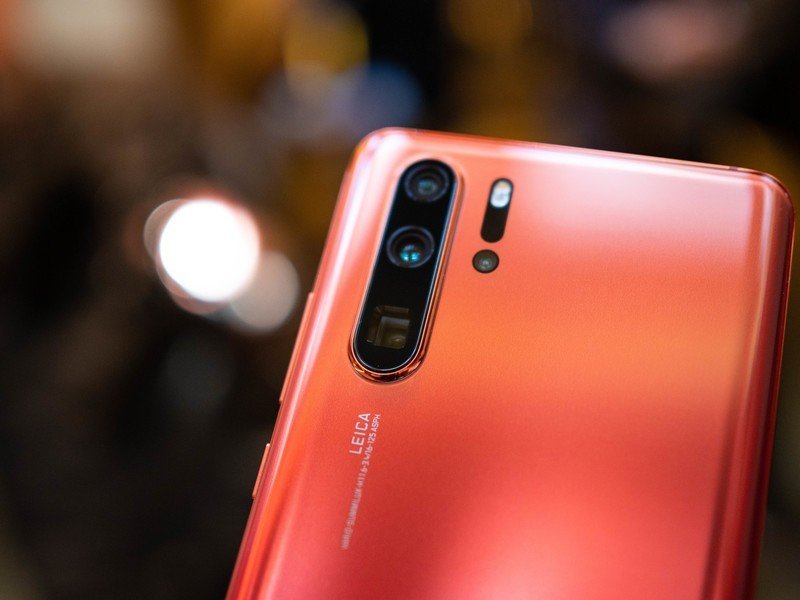
But in the rest of the world, the iPhone is a footnote. An aspirational product that, yes, has an outsized effect on product and software design, but a footnote nonetheless. In the rest of the world, people buy Android phones, and the company they increasingly patronize is Huawei.
With the P30 Pro, Huawei has released by far its best phone yet, and it's not a particularly difficult leap to make that it's going to be incredibly successful outside of the U.S.
The good
- Incredibly versatile camera system
- Delightful, space-optimizing design
- Unmatched battery life and charging options
- EMUI is finally free of huge usability issues
The bad
- Lower resolution display than most flagships
- Loses a speaker over the P20 Pro
- Not officially available Stateside
About this review
This review was written after spending two weeks with an unlocked version of the European Huawei P30 Pro (L29). It was used in Paris, France on the SFR network, and in Toronto, Canada on the TELUS network. It received one update during the review period, to EMUI 9.1.0.124, which purportedly improved camera quality in select situations.
Huawei P30 Pro The Hardware

| Category | Huawei P30 Pro |
|---|---|
| Screen | 6.47-inch Curved OLED19.5:9, FHD+2340x1080 pixels |
| Chipset | Kirin 980 with Dual NPU |
| Memory | 8GB RAM128GB |
| Battery | 4200mAh |
| Rear Camera 1 | 40MP SuperSpectrumWide angle, f/1.6, OIS |
| Rear Camera 2 | 20MP ultra wide angle, f/2.2 |
| Rear Camera 3 | 8MP Periscope5X Optical zoom, f/3.4, OIS |
| Rear Camera 4 | Time-of-flight camera |
| Front camera | 32MP, f/2.0 |
| Water and dust resistance | IP68 |
| Connectivity | Cat 21, up to 1.4GbpsWi-Fi 802.11a/.b/g/n/acBT 5.0, NFC |
| Dimensions | 158 x 73.4 x 8.41 mm192 g |
Huawei makes hardware of very good quality and, increasingly, of excellent design. The P30 Pro resembles its predecessor in many ways, but it lops off the physical fingerprint sensor for additional vertical screen space, and shrinks the notch to a dewdrop, taking full advantage of 2019's most consumer-friendly trends: in-display fingerprint sensors, and display-as-earpiece speaker. The phone is taller than its predecessor, too, which makes it feel a bit unwieldy, especially when used with one hand, but overall the design is a big improvement.
If Samsung had decided to forgo its right-oriented hole punch cutout in favor of a more traditional notch, the Galaxy S10 may have resembled the P30 Pro. The phone mimics Samsung's now-iconic curved glass sides and symmetrical metal frame, but Huawei's flattened the phone's top and bottom, giving it a distinct and not unwelcome contrast. Huawei also employs a different button scheme to Samsung, preferring to put the power and volume buttons on the right side of the phone — which I've grown to prefer, especially given Samsung's latest trend of placing the power button too high up on the phone.
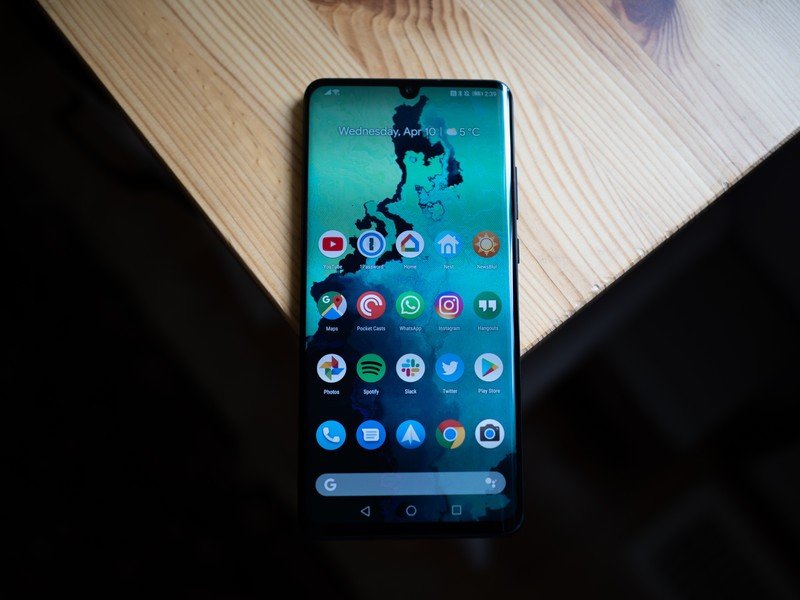
The 6.47-inch OLED display is very good, and with a bit of tweaking it can be both rich and color accurate. By default, it's tuned to the DCI-P3 color gamut, but I found the white balance to err on the warm side so I changed the color temperature to hew bluer and it was fine.
I then enabled the Vivid mode, which doesn't adhere to any calibration standard but it is nonetheless the one my eyes prefer — oversaturated colors that pop off the screen. Still, compared to the Mate 20 Pro's lackluster display, this one feels much closer to what you'd expect from a flagship.
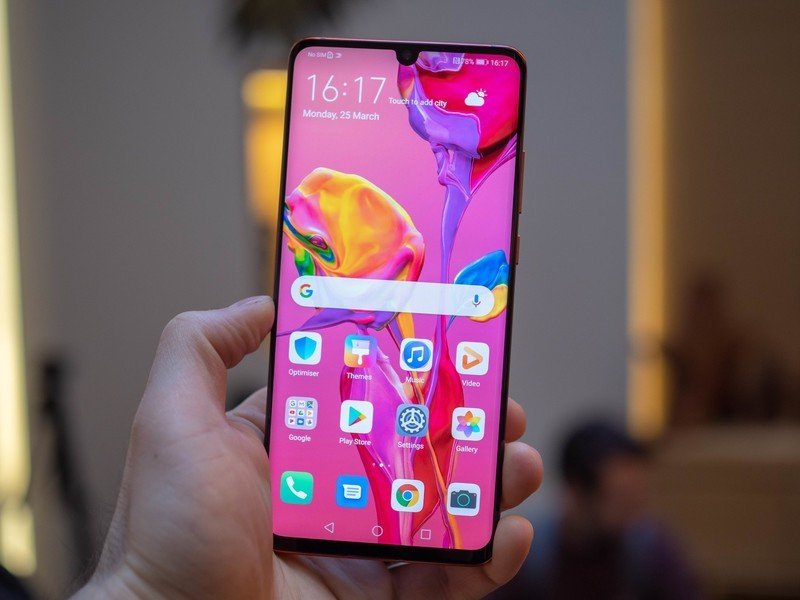
The downside is that the 2340x1080 resolution is relatively low compared to the Galaxy S10 and other 1440p phones, but I'd challenge anyone to tell the difference. I'm certainly not defending Huawei's decision — I'd rather have a higher-resolution panel, especially on a phone this pricey — but I'd also rather have a rich, accurate, and responsive 1080p panel over a crappy, sharper one.
In some markets (though not in Canada), the P30 Pro comes with a clear case in the box, just like its predecessor — that's a welcome inclusion because, as most other glass-backed phones available today, this phone is slippery. At 192 grams, it's also heavier than most, accelerating its potential descent as it slips off a table and hurtles towards the unforgiving ground. I hate clear TPU cases so I quickly purchased my own, a colorful, textured option from Anccer, but there are plenty of great cases from well-known brands like Spigen already available.
The P30 Pro loses its front-facing speaker in favor of a smaller notch. I think the trade-off was worth it.
As mentioned, the P30 Pro uses its OLED display as a speaker, directing audio through the OLED membrane and aurally transparent Gorilla Glass. The trick works — surprisingly well, in fact — with phone call audio coming through nice and clear. Huawei also anticipates a bit of confusion for newbies, so it actually directs users to place their ears in a certain spot on the screen. Unfortunately, the area doesn't work so well as a speaker, so you lose the stereo separation of the P20 Pro.
The single bottom-firing speaker is better tuned than its predecessor's — it's clearer and doesn't distort as easily — but it also lacks warmth and that little bit of low-end afforded by a deeper cavity. The trade-off is worth it given the reduction in notch size, but only slightly in my opinion. Also, no headphone jack, nor any adapter in the box, but there is a decent pair of USB-C headphones included, which is appreciated.
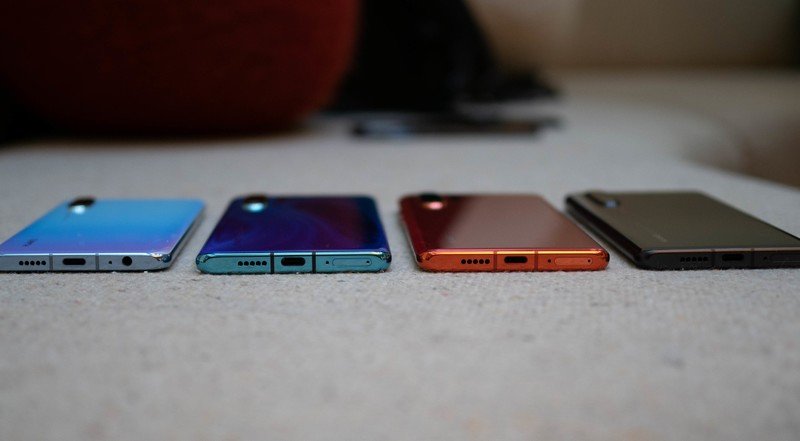
While my review unit is the decidedly boring-looking black variant, Huawei's superlative engineering has extended to its colorways. Both the P30 and P30 Pro are afforded the same color treatments this year, with a striking red hue, a familiar but still-stunning Aurora blue model, and something called Breathing Crystal, which starts white and morphs between blue and purple depending on the shade. It's a panoply of striking options undermined by the phone's slippery nature, but if you're brave enough to use it sans case you'll be rewarded with one that stands out.
Inside the phone, Huawei's own Kirin 980 chip pairs with 8GB of RAM and 128GB of base storage to provide a foundation of excellent performance. I think it's safe to say no top-of-the-line Android phone feels slow these days, especially straight out of the box, but Huawei's got its software optimizations down to a steady science. Even the software itself, billed as EMUI 9.1, alleviates most of the usability concerns of previous generations. Gone are the issues with expanding notifications from the homescreen, though they still disappear after a single appearance; media notifications no longer clash with the surrounding text, marring the otherwise-clean shade; and most of the more egregious battery-saving optimizations have been toned back, though it will send a warning every once in a while.
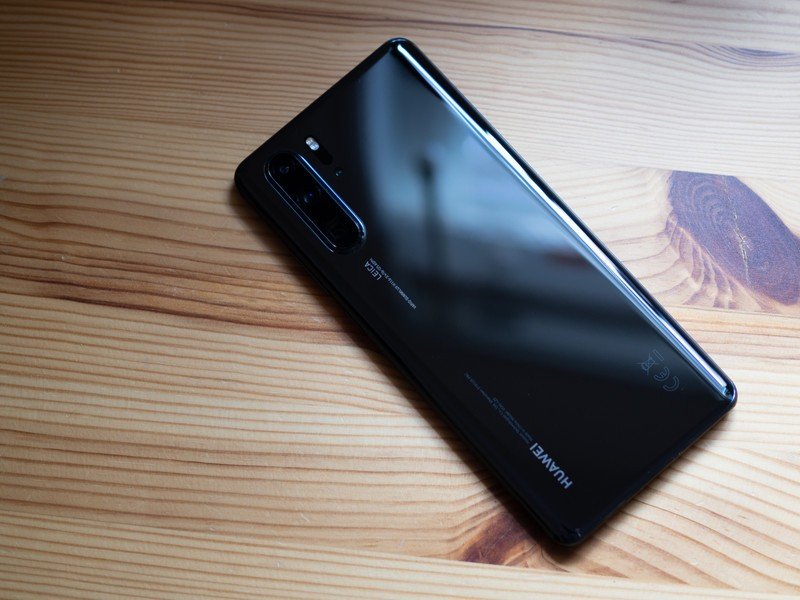
After spending some time with Samsung's more unified-feeling One UI on the Galaxy S10, I'm not ready to say Huawei's there yet, but I'm also unwilling to parrot the rest of the industry in throwing the company's software experience under the bus. It's rough around the edges — where Samsung was two or three years ago — but if you're willing to spend some time tweaking it, it's more than manageable. Huawei's even hired a few designers to wash the skeuomorphism from its icons, and while many of the assets still look like they're straight outta iOS, they're just objectively better than ever before, so who am I to complain?
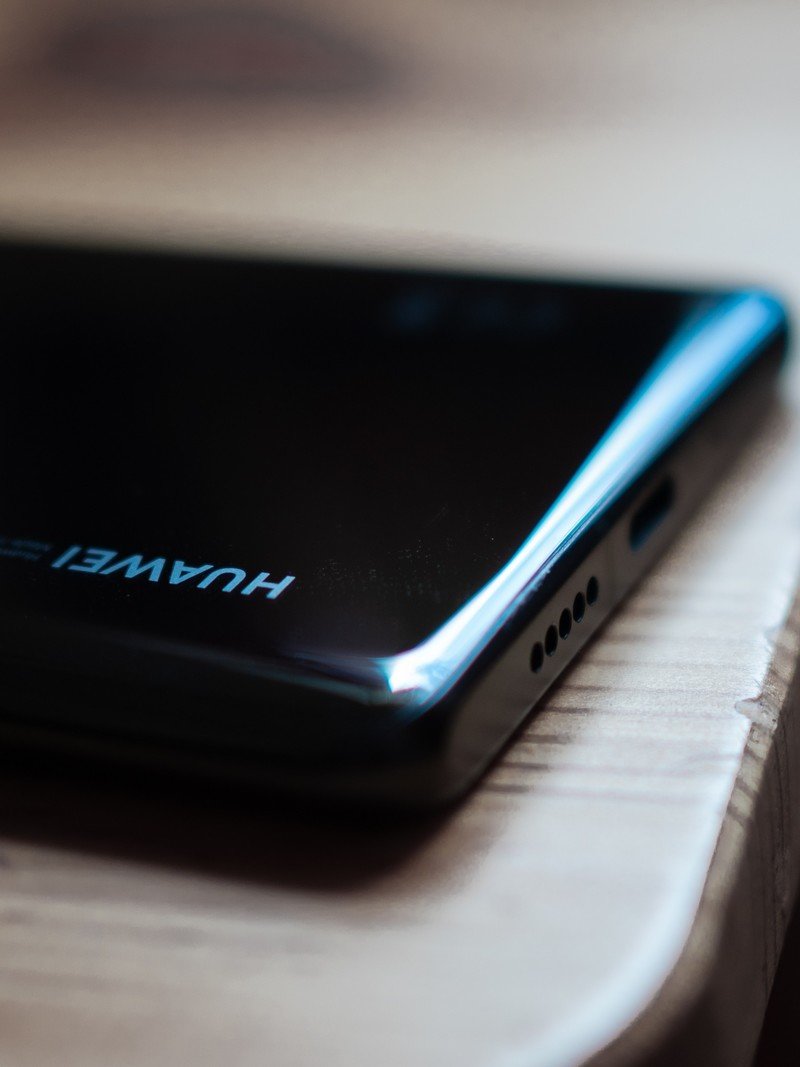
There are, however, some hiccups to note: the default launcher isn't great, employing the practice of eliminating the app drawer and blanketing the home screen with app icons, iPhone-style. While there is an option to enable an app drawer, the option is hidden in the settings, and even then it doesn't use gestures, just the old-school drawer button. And while I'll repeat what I've said in every Huawei phone review since 2015 — install a third-party launcher and you'll be fine — I had tremendous trouble getting Nova or Action Launcher to stabilize after installing them, and even once I figured out the problem, neither would "keep" as the default launcher.
Even without these issues, Huawei buries the setting to change the default launcher, making it even more difficult for newcomers to figure out. It's a user-hostile decision that discourages the practice, mainly because it uses its default launcher to push a revenue-generating service called HiVision, which is built into yet another iOS-copying feature, a system-wide search bar when you swipe down anywhere on the home screen.
So, yeah, the software isn't close to perfect yet, but it's still based on Android 9 Pie, and Huawei's been pretty good about keeping its older phones updated — the P20 Pro received Pie a few weeks back, and the company's been sending out security patches on a close to monthly basis.
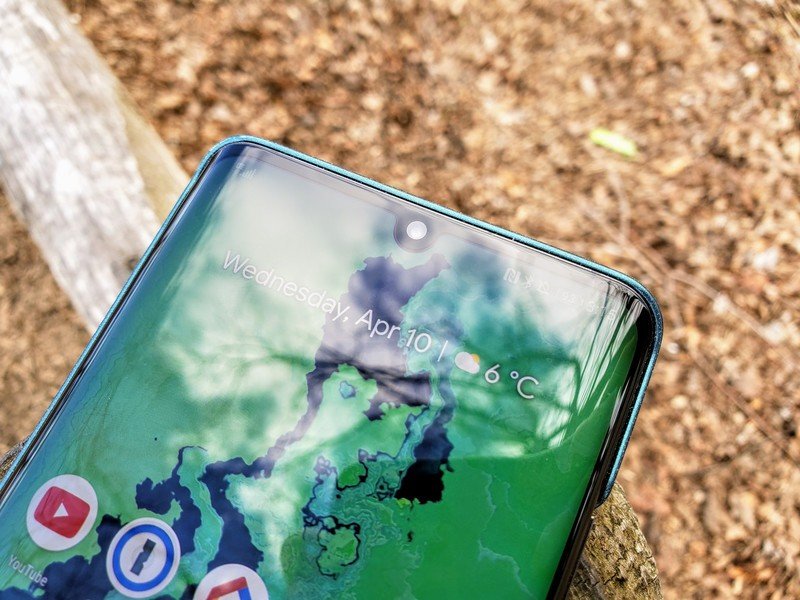
The phone's biometrics have also received a slight overhaul — thank goodness. While I liked the Mate 20 Pro, it had two major issues, and both of them had to do with unlocking the phone. The first was the 3D depth-sensing face unlock, which justified the wide notch with an IR blaster and dot projector — basically, Face ID for Android. Lots of people, including our own Nirave Gondhia, said it worked really well, but I never had that experience. It would fail more than it would work, and I'd find myself re-scanning my face after each software update hoping that it would magically discover that I'm the same person each time I used my phone. No such luck — I ended up disabling it.
Worse, the in-display fingerprint sensor had the typical gen-one problems: it was super inconsistent, and didn't work well in the cold or with a wet thumb. I couldn't disable that one, because I needed it, but I always found myself longing for the capacitive sensors that just worked every time, in any condition.
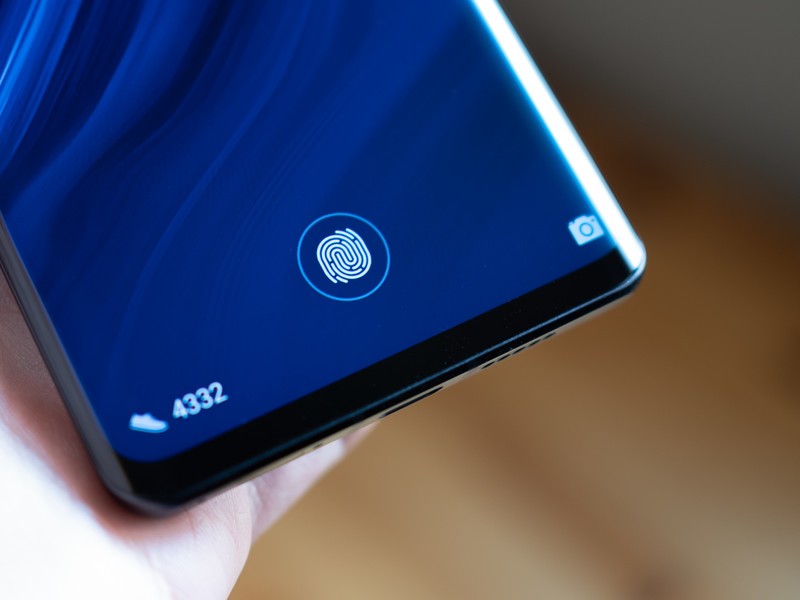
Fast forward to the P30 Pro, which saves space on the notch by using just the front-facing camera as a secondary (and much less secure) form of face unlock. And thank goodness, too, because it's way faster and more consistent than the Mate 20 Pro.
Even better is the second-gen optical in-display fingerprint sensor, because it's so good! It's, like, 95% reliable, and way, way faster than other in-display sensors on the market right now. And yes, that includes the Galaxy S10. I love using this sensor; it delivers exactly the experience that this tech has been promising for nearly two years. Consider the growing pains over.
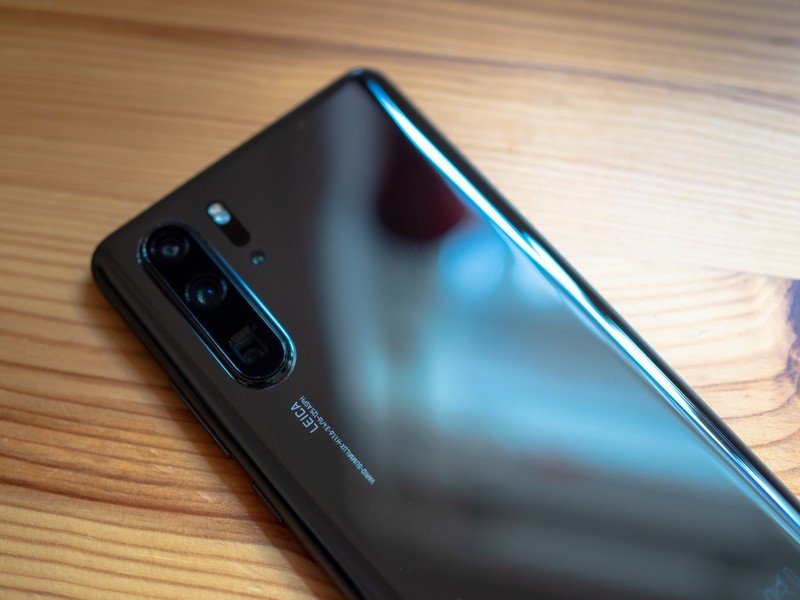
Finally, battery life. It should come as no surprise that the 4,200mAh cell inside the P30 Pro delivers outstanding uptime. I've used the phone for over two weeks now and I don't recall a single day where it dropped below 50%. Some days it was at 65%. I'm not going to bog down the review with Screen-On Time stats, because you don't need to see them. If you manage to deplete the P30 Pro before you go to bed, you probably use your phone too much 😂.
Topping the phone is easy, too: there's a 40W charging brick in the box, which gets you from dead to 70% in 30 minutes and 100% in around an hour, while 15W wireless charging rounds out the experience. And there's IP68 water and dust resistance, too, if you're feeling splashy.
While the vast majority of the marketing around the P30 Pro will revolve around the camera, and deservedly so, this is the first Huawei phone I've used that doesn't feel hampered by its fundamentals, or undermined by its software.
Huawei P30 Pro The Cameras
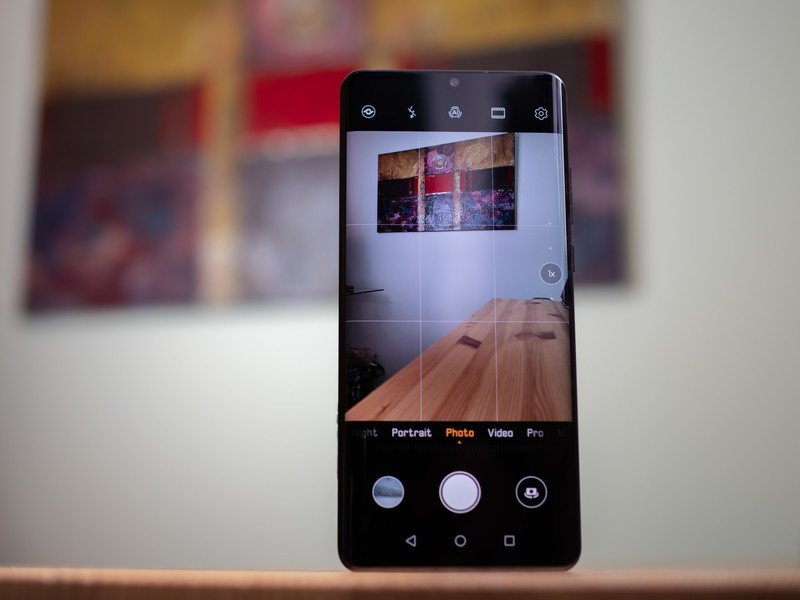
If I were to describe the P30 Pro's camera experience in a word, it'd be versatile. This thing can get practically any shot you'd want, from ultra-wide angle to super zoom and everything in between. There's been a lot of hype about the quality of the camera, especially in low light, and that's mostly true, but I'd say the biggest benefit to having a P30 Pro in your pocket is the variety of shooting experience it affords.

There are five camera sensors in total, on the phone — four on the back, and one on the front — though one of them, the rear time-of-flight sensor, doesn't actually capture light, just depth information. The main sensor is very big for a phone, so the fact that it has 40 megapixels — nearly four times the typical number on a phone — shouldn't concern you.
That's because the sensor uses a very neat Quad Bayer filter system to combine four pixels into one, effectively creating a 10 megapixel sensor that can capture photos at multiple exposures at the same time. Think of a traditional HDR setup, where a shutter will fire multiple times at different exposures and stitch those shots together to improve dynamic range. Huawei speeds up the process, and prevents aberrations, by doing that processing in real time.
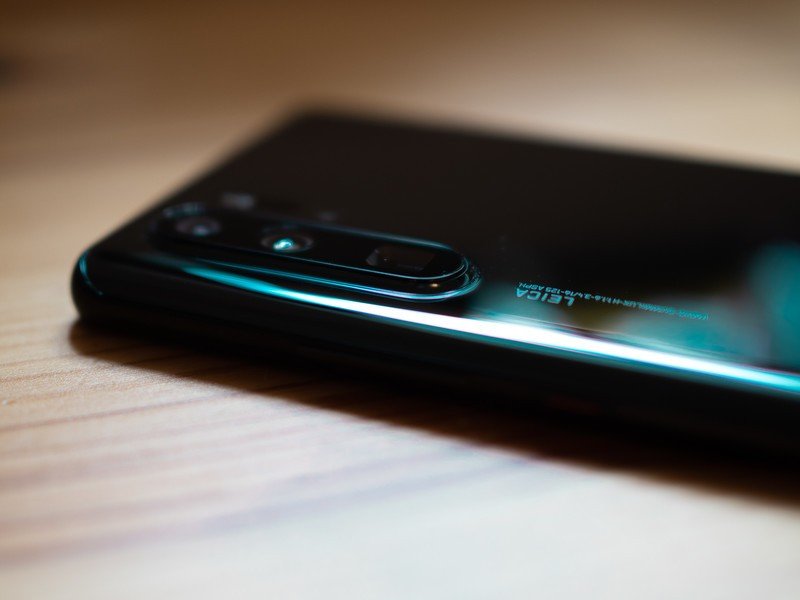
While the main sensor shares the same number of pixels as the P20 Pro and Mate 20 Pro, the actual makeup is different; instead of the sensor covered with a traditional R(ed)G(reen)G(reen)B(lue) filter — there are typically more green pixels because humans are most sensitive to green wavelengths — it's now using a R(ed)Y(ellow)Y(ellow)B(lue) filter, with a custom image signal processor, to let in 40% more light than before. The takeaway is that Huawei's low light performance is very good, often better than the Pixel 3's Night Sight feature, and that extends its versatility far beyond what you'd expect from a typical smartphone camera.
The other side of things is that Huawei is doing a lot more number crunching for every photo, and occasionally the results from the main sensor don't feature the rich colors and warm tones of a Galaxy S10, or the sheer detail of a Pixel 3, but as I've said in previous reviews, I want photos I can use, photos that bring me joy, not a collection of sterile, technically proficient bits and bytes that I can store away in an archive. The Huawei P30 Pro achieves that in spades.

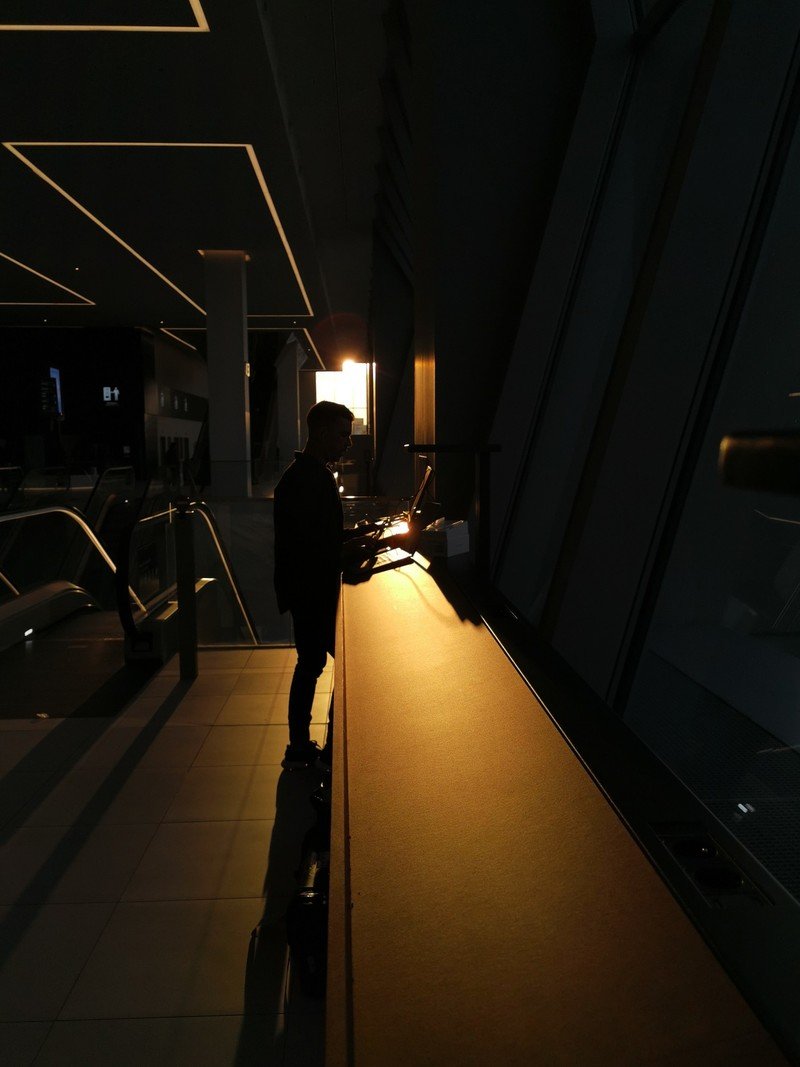
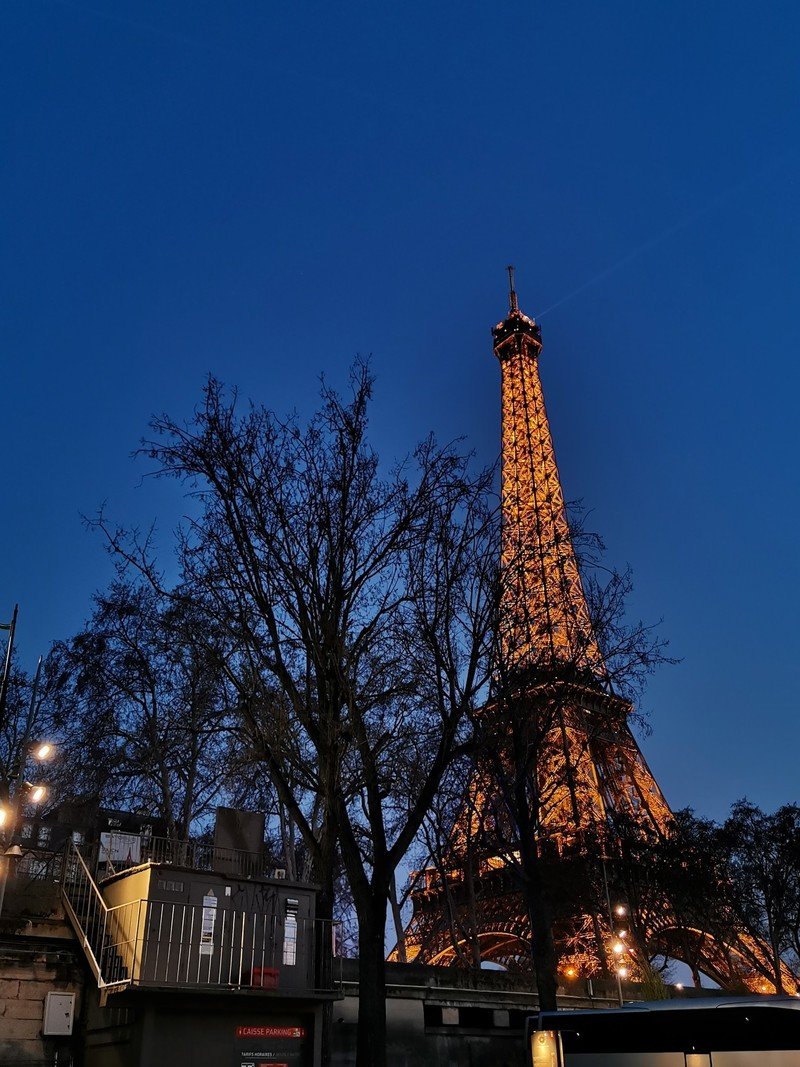
Part of it is the diversity of shooting options: like the Mate 20 Pro, there's an ultra-wide angle camera for those epic, distorted landscapes (and, miraculously, super macro shots), which is super useful. With the inclusion of such a wide focal length on devices across the Galaxy S10 range (along with the LG G and V series, which deserves the introduction credit), ultra-wide cameras have become commonplace, and I'm glad about it: that will only increase the appeal.

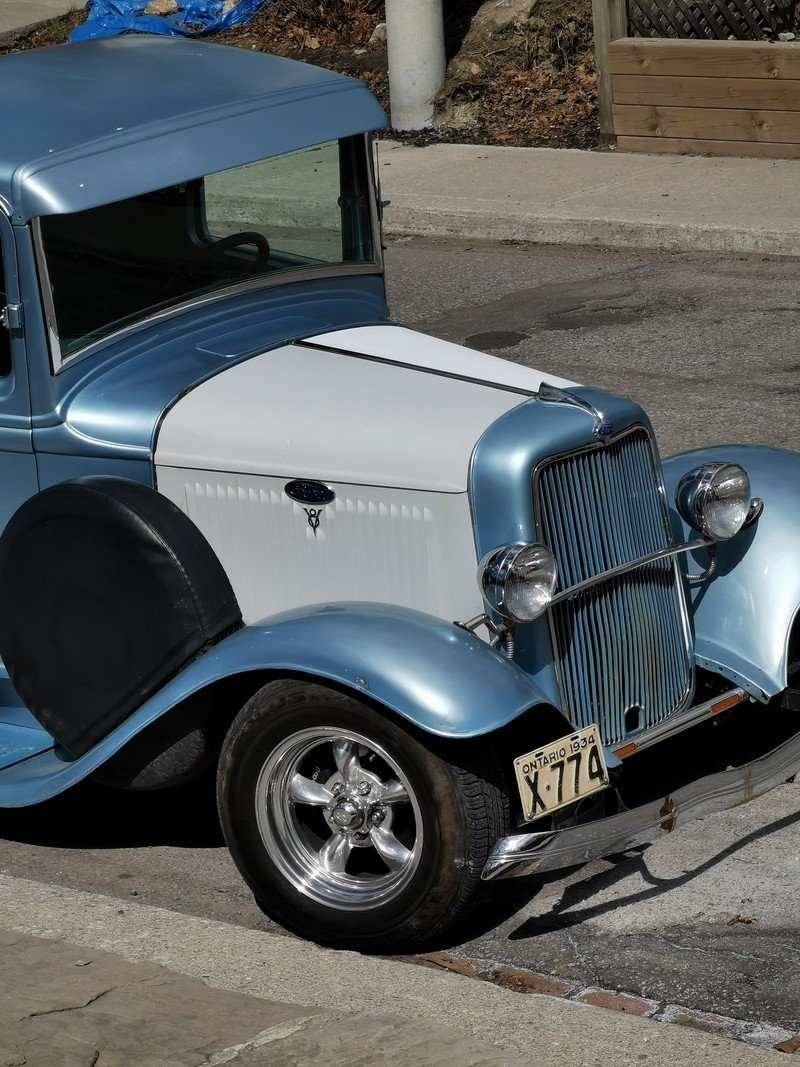
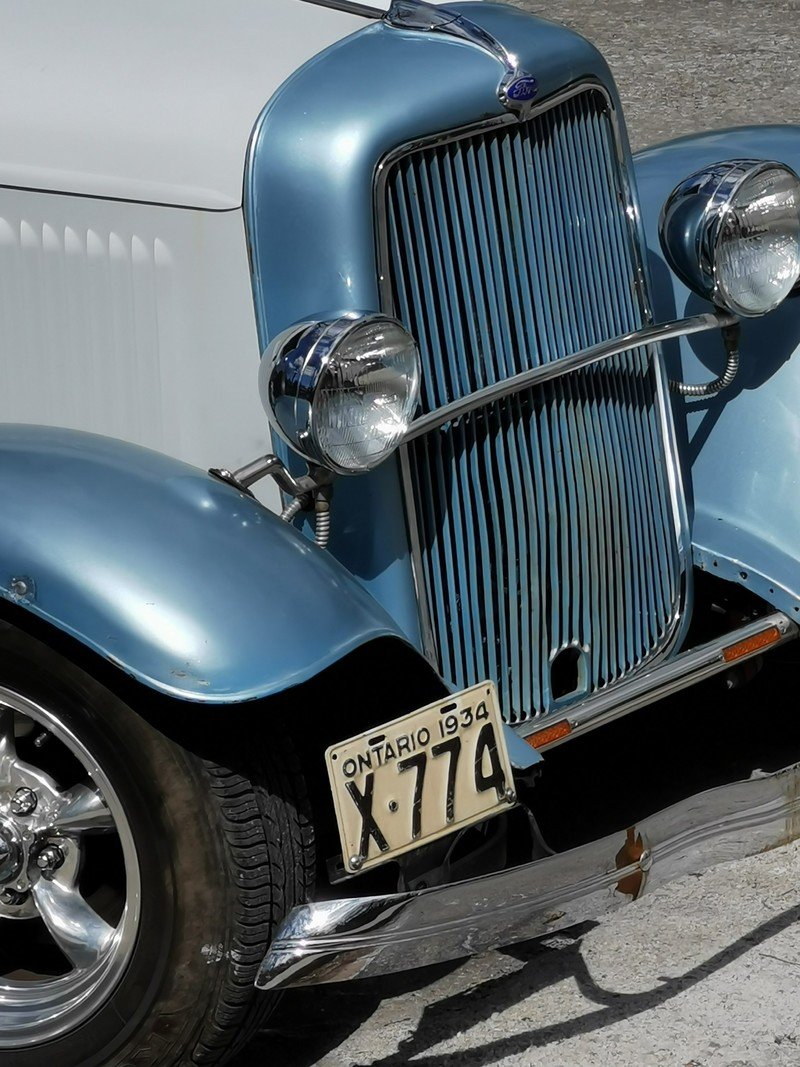
Huawei P30 Pro at 1x (left) / 5x (center) / 10x (right) — Look at how much detail is retained even at 10x!
Arguably, though, the pièce de résistance of the P30 Pro's camera setup is its 5x lossless zoom feature. I have to mention that it's lossless because most phones can crop digitally up to five or even 10 times, but doing so loses a considerable amount of detail.
Huawei said it worked for five years to develop and perfect the tech to power such an option — in order to keep the phone thin, Huawei had to place the sensor and stabilization module deep inside the phone, refracting light coming through the lens off a prism positioned at a 90-degree angle to the sensor. It's a sneaky bit of engineering that companies like OPPO, Vivo and others will likely improve upon over the next few release cycles, but right now Huawei can claim victory.
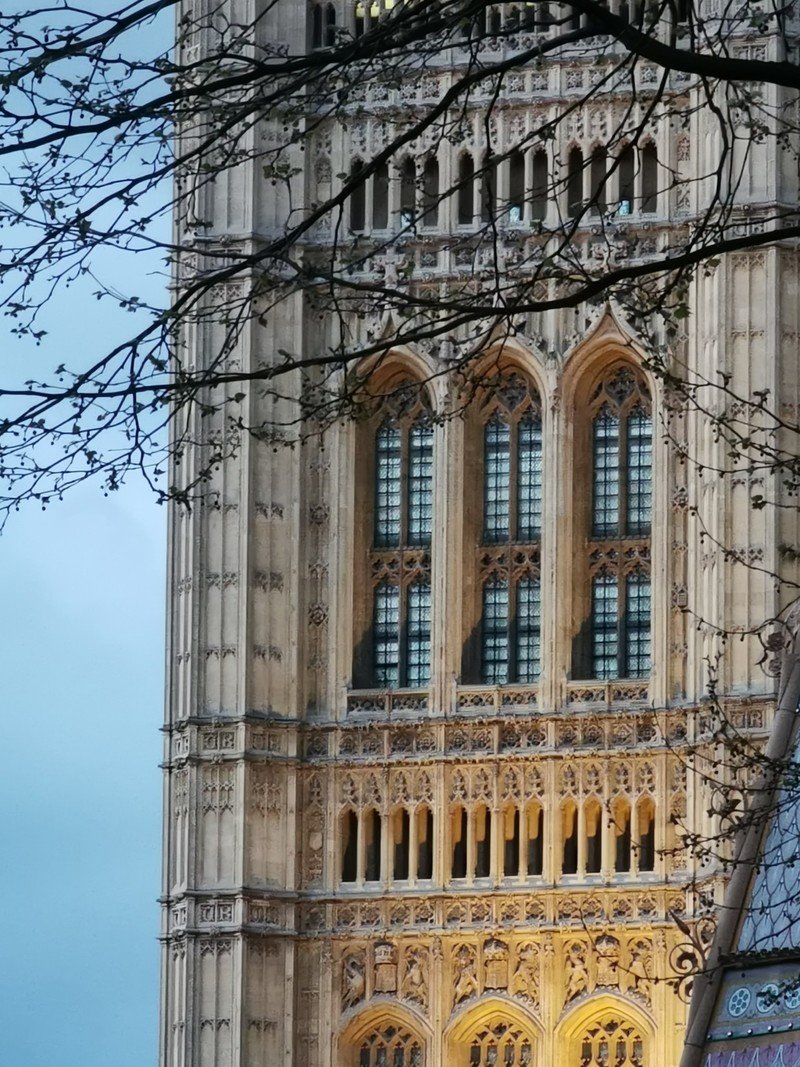
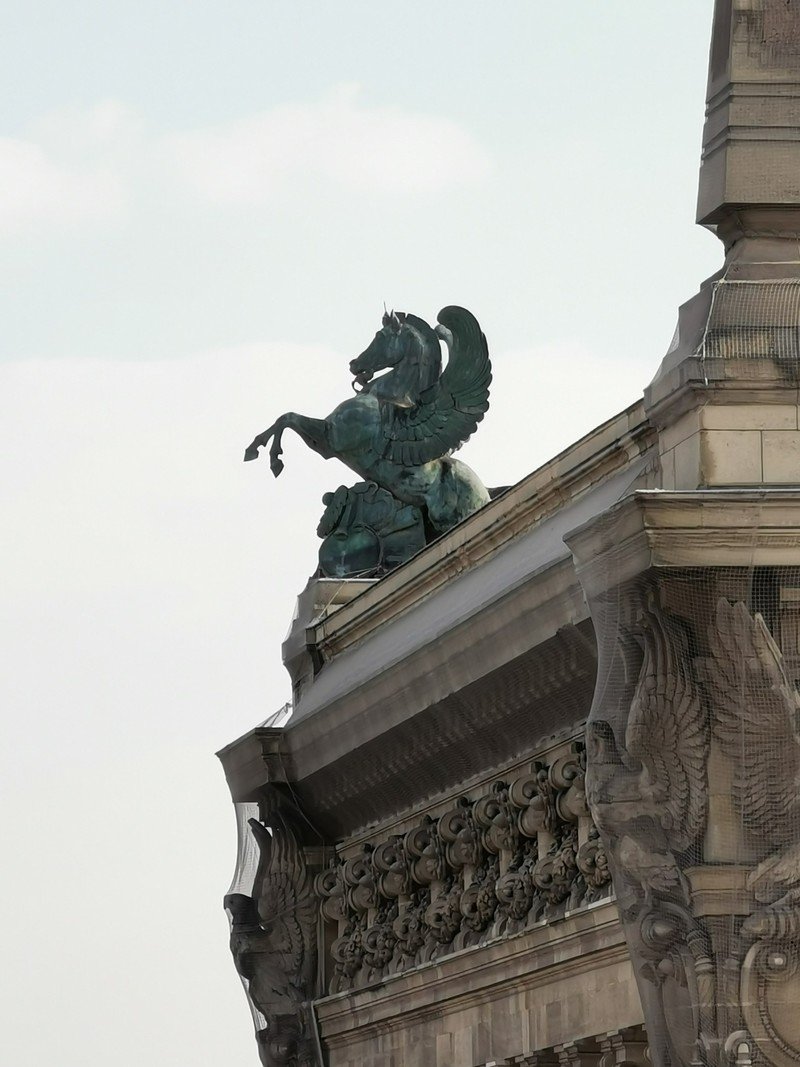
And what a victory: though the sensor's resolution is only eight megapixels, and the lens is a comparatively narrow f/3.4, the combination of Huawei's excellent physical and electronic stabilization, coupled with improved JPEG processing, makes shooting with the long-range camera a dream.
There are some caveats to think about: 5x zoom is the equivalent of about 125mm focal length, which requires rethinking the way you shoot and frame particular shots. The P30 Pro and Mate 20 Pro have 3x lenses, so there's a smaller delta between main and telephoto crops. Less dramatic photos, perhaps, but easier to frame.


Comparing Zadie, my Great Dane, at 4.9x (left) with a crop of the main sensor vs. 5x (right) using the telephoto lens. You can see the the difference in detail, grain, and color between the two.
Between 1x and 4.9x, the P30 Pro merely crops the main sensor, which produces fine results, but it's clear they're digital crops. And while the 5x telephoto camera produces some incredible results, even at its "hybrid lossless" 10x magnification, the difference in sensor quality and processing from the main sensor is obvious, especially in the color science.
That said, I've absolutely loved taking photos with the 5x camera because it challenges me to rethink photography in general. Using the P30 Pro is the phone equivalent of using something like the Sony RX10. When zooming to 10x, the photos are still remarkable. After that — it can zoom all the way to an astonishing 50x — the results are pretty bad, but they can stand in for binoculars should the need arise.


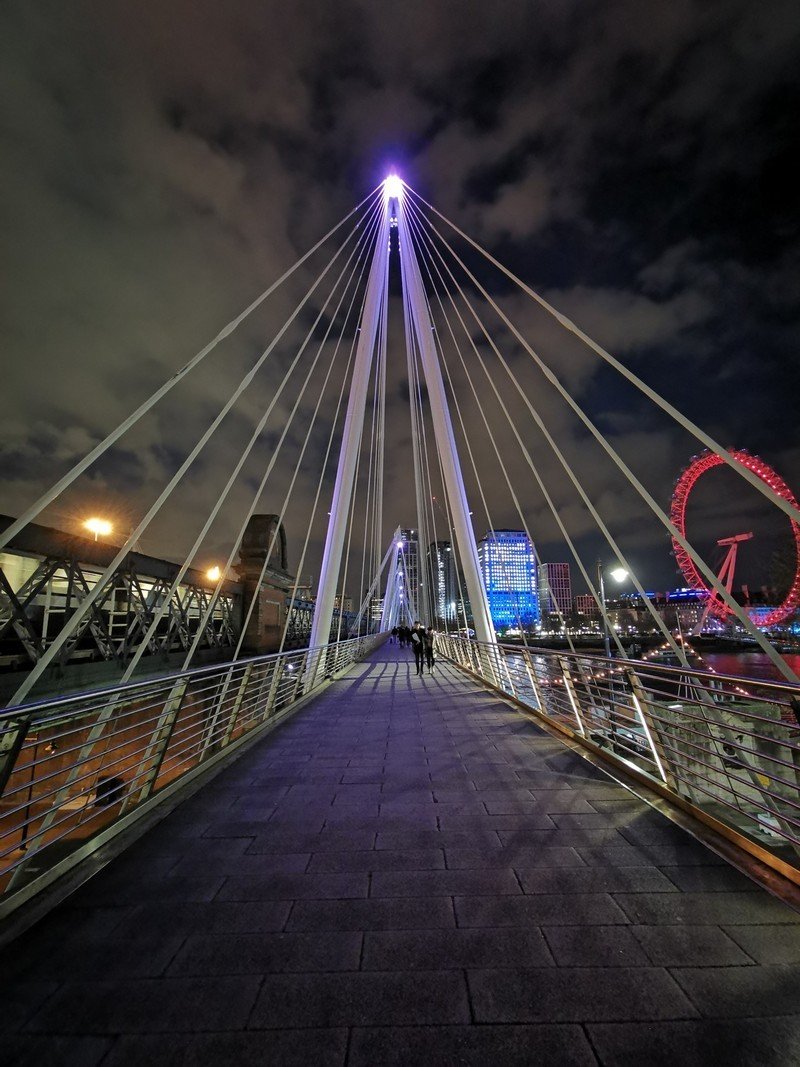
Such enjoyment extends to low-light shots, too. Huawei claims that the P30 Pro can take usable photos all the way up to ISO 409,600 — which basically means it can see in the dark — and while I wouldn't willingly share a 50x photo or a photo taken in pitch black just to prove I can, the P30 Pro performs incredibly well in poorly-lit conditions.
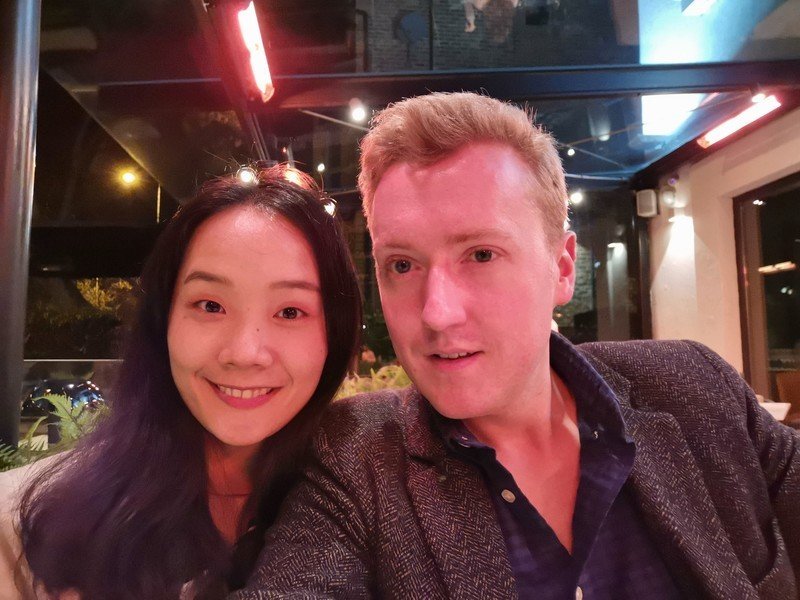
Both the main 40MP and 8MP telephoto cameras are optically stabilized, but the company's improved night mode works on all three cameras. The fourth "camera", a Time of Flight sensor, aids in autofocus, especially in low light, and helps separate foreground subjects from background objects, which helps improve portrait photos.
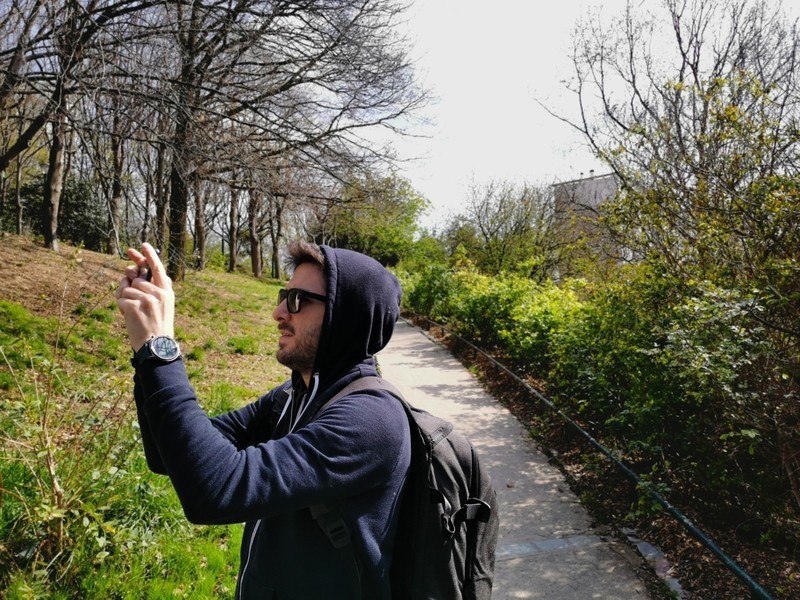
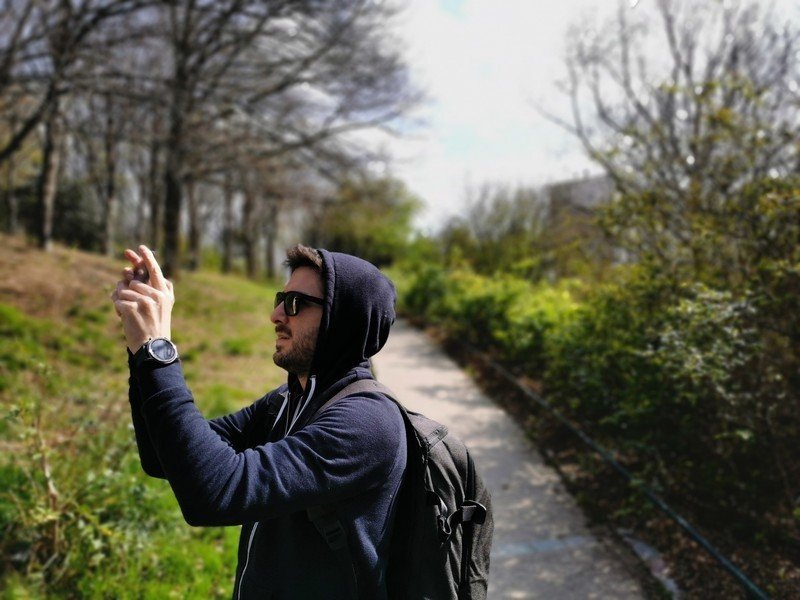
While Huawei's ToF sensor definitely improves the P30 Pro's portrait and aperture modes, the results are still hit or miss. Edge detection is definitely better than on previous Huawei devices, but it sometimes gets confused around hair, or when people are holding objects.
But as you can see in the examples above, the rolling bokeh is quite appealing, though not quite as advanced as what Google and Apple have been able to achieve. That said, I think Huawei is improving in portrait and edge detection more quickly than either of those companies, so I look forward to seeing what the P40 Pro holds.
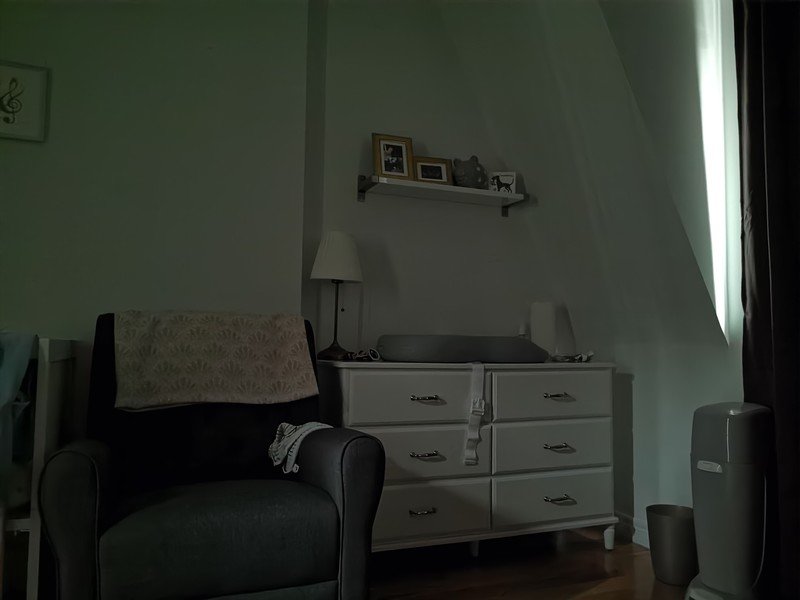
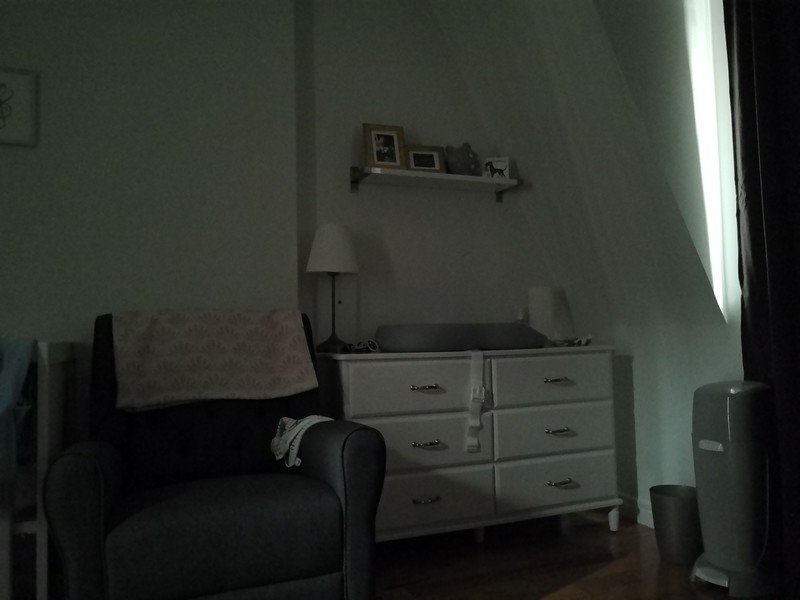
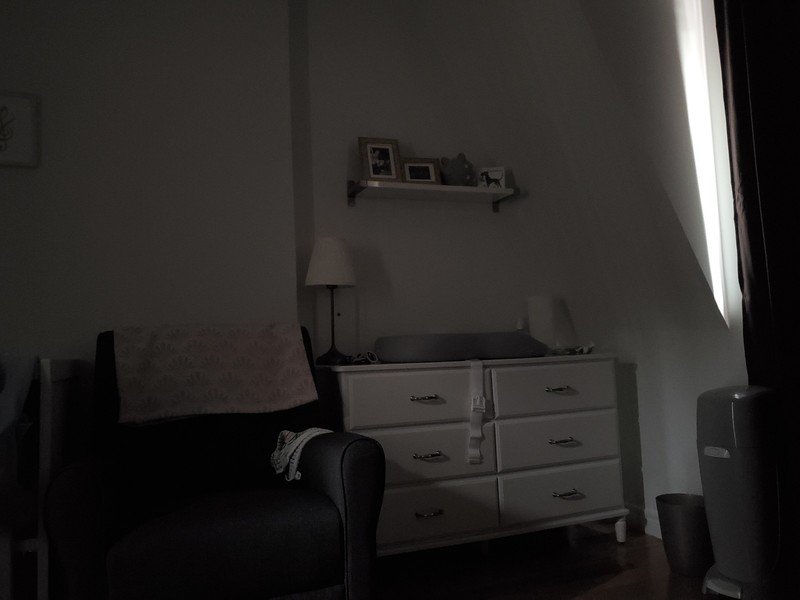
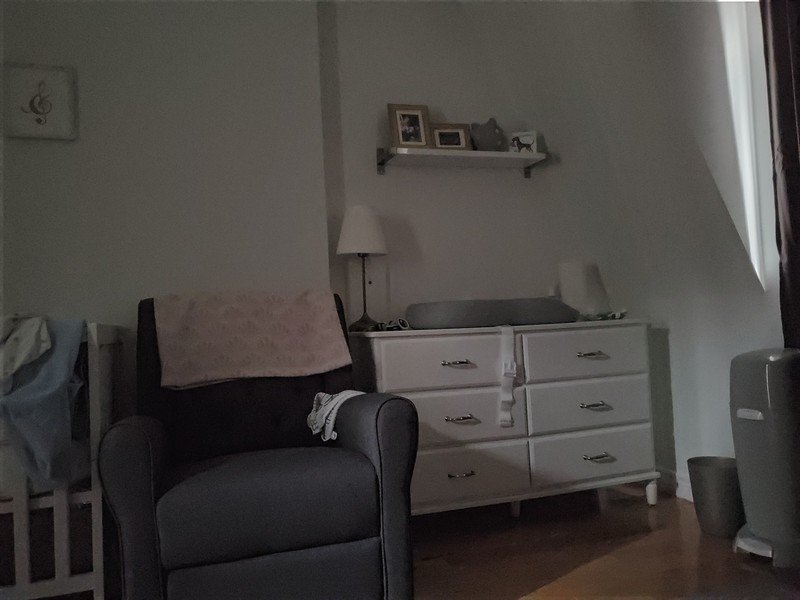
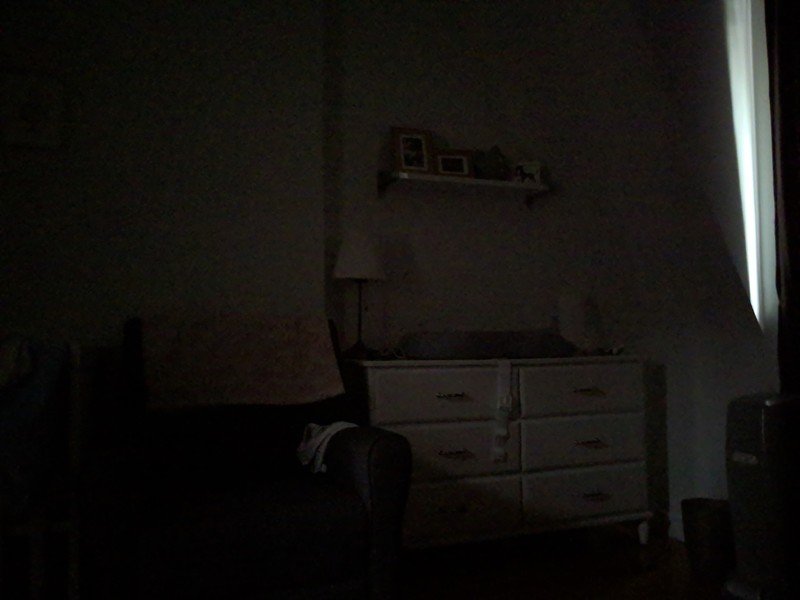

A lot of comparisons have been made to the Pixel 3's Night Sight, and I can safely say that while Huawei's night mode doesn't always produce a better photo than Google, the P30 Pro often doesn't need its special low-light feature to produce incredibly detailed images in the dark.
Both night modes have a tendency to overbrighten a scene, which often destroys the ambience; there are few times I'm taking a photo in the dark where I want it to appear like it's day. Instead, I want a photo taken at night to be dark, moody, and transient, but with recognizable subjects, vivid colors, and tolerable amount of grain. More than any other phone, the P30 Pro delivers that effect.
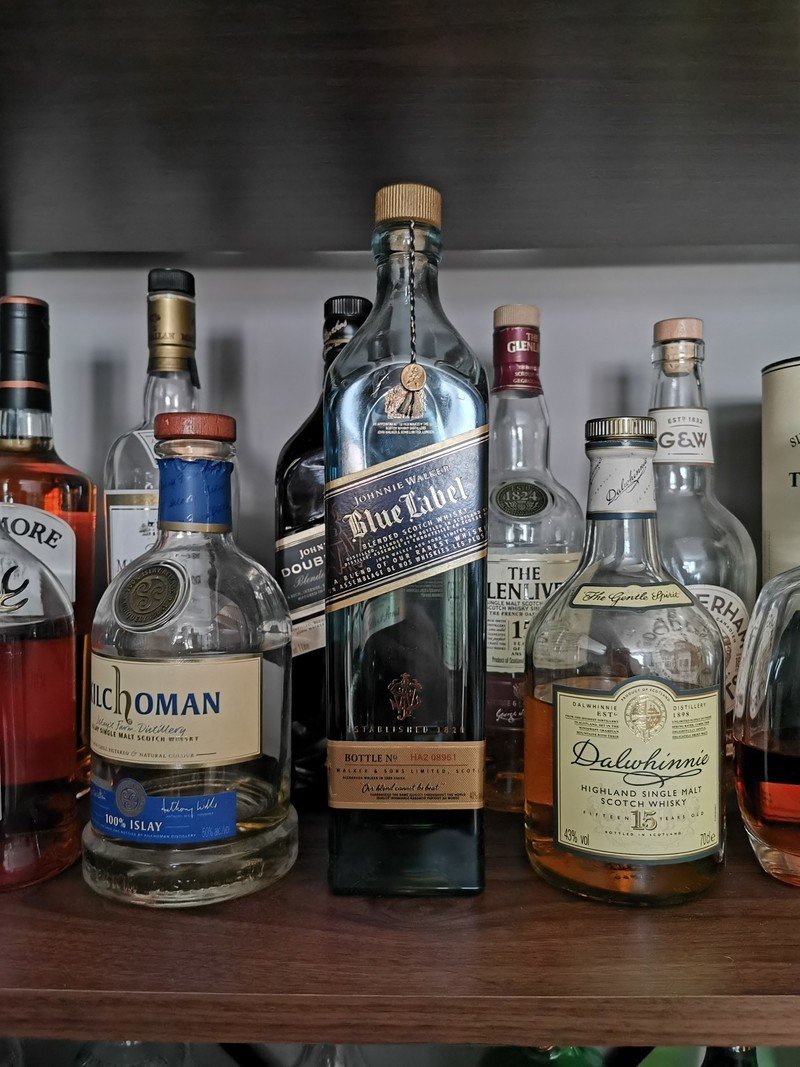
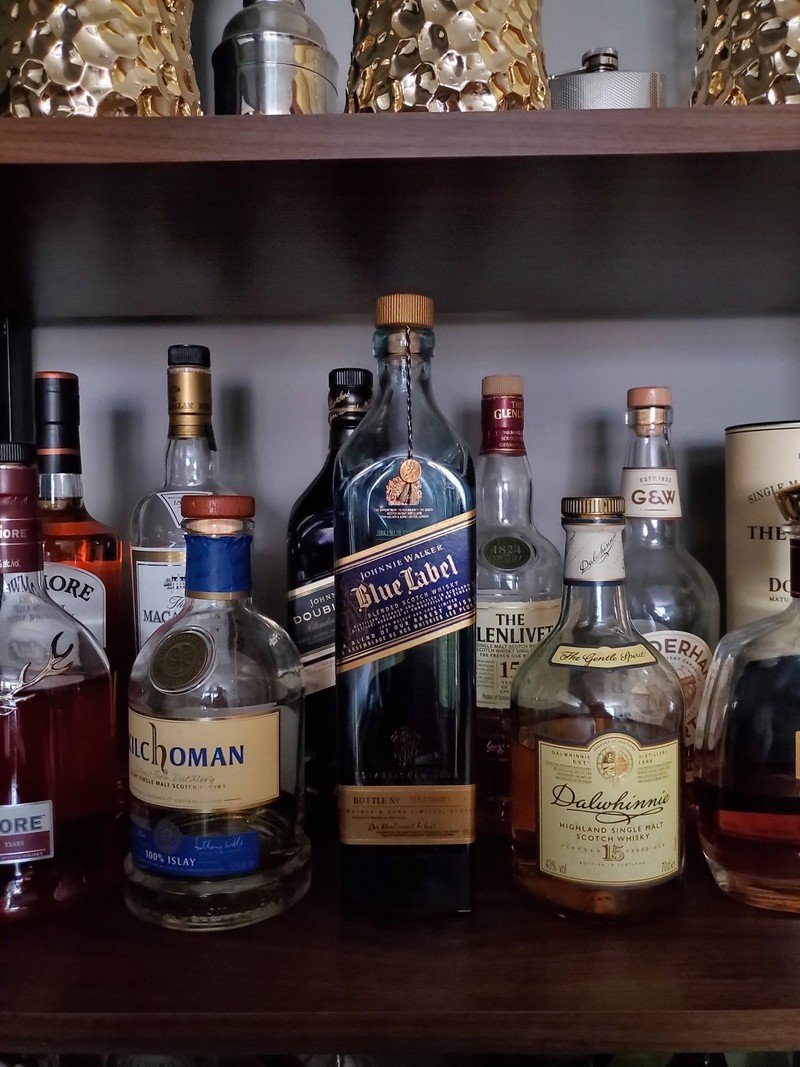
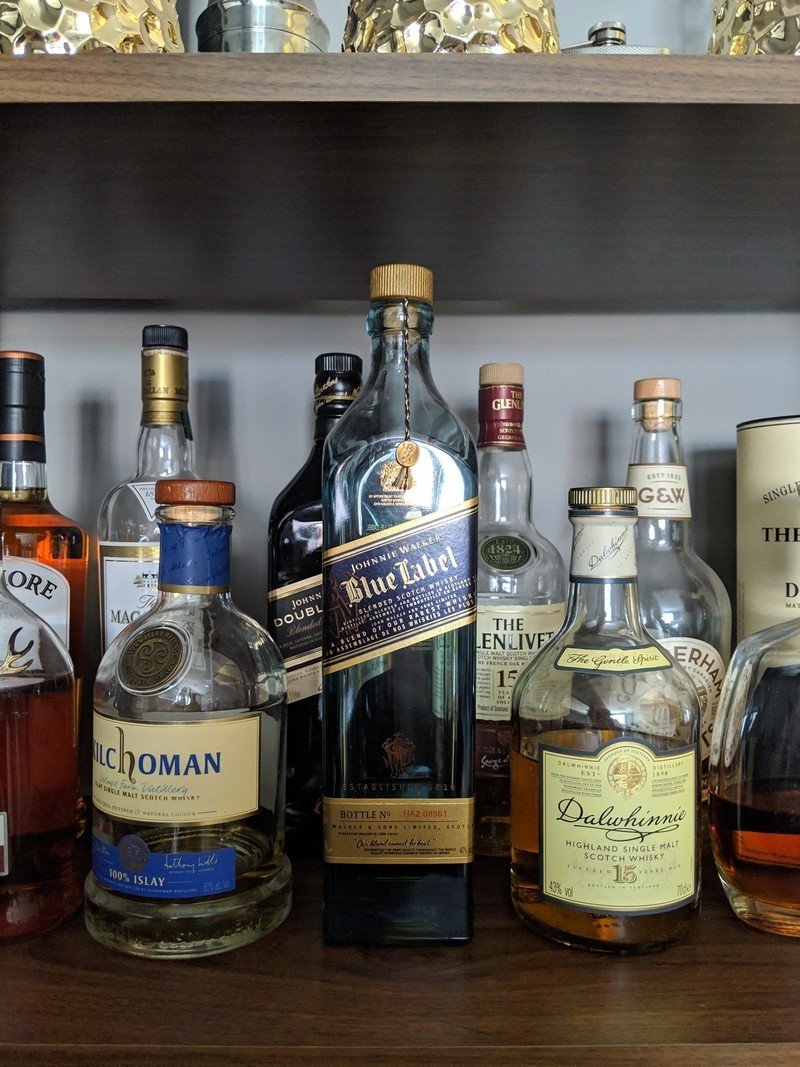
Huawei P30 Pro (left) | Samsung Galaxy S10 (center) | Google Pixel 3 (right) — Night Mode enabled on all
I'll talk briefly about a few other camera features:
- I'm glad that Huawei added a reachable toggle for its Master AI mode in the camera app, though I'm pleased to say I generally keep it on. The company's toned down the effects of this mode considerably over the P20 Pro and Mate 20 Pro, adding only hints of additional color or contrast to most scenes. I don't love that it enables portrait whenever it sees a person's face — I don't always want artificial bokeh when taking a photo of a person — but that's a minor complaint.
- Video quality has improved substantially over the Mate 20 Pro, which had a variety of judder and frame rate issues. Stabilization is incredible, but for some reason, Huawei doesn't offer an option to capture 4k at 60fps like the Galaxy S10 or iPhone XS.
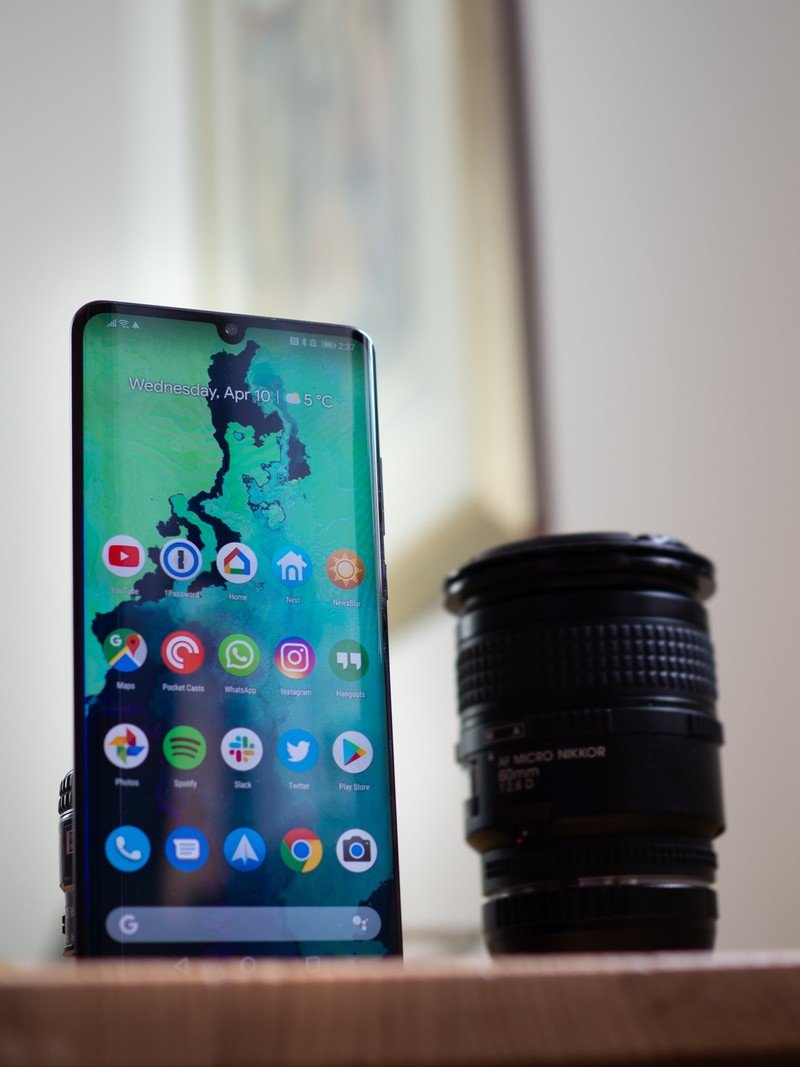
- The front-facing camera has plenty of resolution, at 32MP, but unlike the Galaxy S10's FFC it's fixed-focus, and I had a lot of trouble capturing a sharp selfie, even with the included guides and in good light. Not sure what's going on here.
- Huawei's so-called AI HDR+ uses computational photography to make sure that foreground subjects are properly lit even in heavily backlit scenarios. That's all well and good, but it often resulted in photos with way too much saturation and contrast, making everything look like I imported the photo to Instagram and ramped up Lux to 100. I hope Huawei tones this down a bit.
- Finally, while I think Huawei's taken great strides to improve the usability of its camera app, that you need to use a second finger to initiate zoom rather than making the controls accessible to the thumb on the hand holding the phone is a baffling oversight, and one I hope the company addresses.
Huawei P30 Pro Bottom Line
It's clear that Huawei makes cameras with phone parts — it's been doing that for a while now and the P30 Pro just reinforces that strategy. Thankfully all the phone parts are worth using, and the cameras are outstanding. At just under 1000 Euros, £900, and more than $1200 CAD, this isn't a cheap phone, but it's also on par with the Galaxy S10+ in each market — and extremely competitive with Samsung's best.
4.5 out of 5
I am currently using the P30 Pro as my daily driver and I have no intention of giving it up anytime soon. The phone's available in Canada, the UK, and most European countries right now, and if you're in the U.S. you can easily import it — it'll work on T-Mobile and AT&T but not Verizon or Sprint.
I'm going to go out on a limb and say this'll be Huawei's best-selling phone ever once the beans are counted at the end of the year, and based on my experience so far, it'll be easy to see why.
Daniel Bader was a former Android Central Editor-in-Chief and Executive Editor for iMore and Windows Central.
